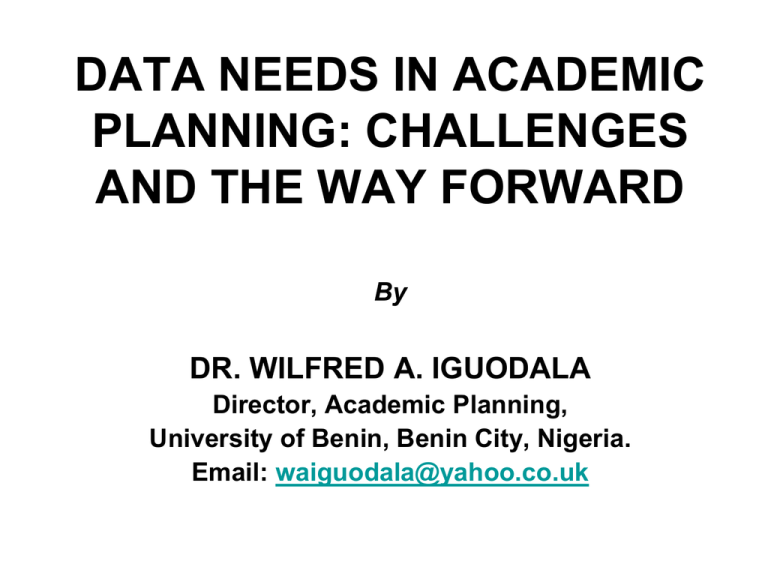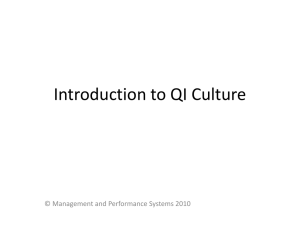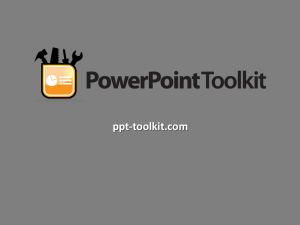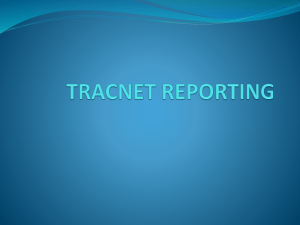
DATA NEEDS IN ACADEMIC
PLANNING: CHALLENGES
AND THE WAY FORWARD
By
DR. WILFRED A. IGUODALA
Director, Academic Planning,
University of Benin, Benin City, Nigeria.
Email: waiguodala@yahoo.co.uk
1.0 INTRODUCTION:
The discussions in this paper would be centred on
the Data the Academic Planning Officer requires in
the performance of his/her duties. Therefore, the
type, sources, methods, time and purposes of data
collection are discussed. Also, some data
analysis/presentation techniques, data storage and
retrieval methods are considered. In addition, some
of the challenges of data collection, analysis, storage
and management are given some consideration.
Finally, the paper contains some recommendations
that would enhance the competence and quality of
Academic Planning Officers in Nigerian Universities
as well as facilitate the data management enterprise
in our institutions.
2.0 DEFINITION OF DATA
The term data refers to qualitative or quantitative
attributes of a variable or set of variables. They are
typically the results of measurements and can be the
basis of graphs, images or observations of a set of
variables. They are often viewed as the lowest level of
abstraction from which information and, then
knowledge are derived. Data on its own carries no
meaning. For data to become information, it must be
interpreted and take on a meaning. For example, the total
number of students in a Department can generally be
considered as “data”, the components or characteristics
of that figure may be considered as “information”, and a
report containing the movement/flow of students from one
level to the other and on the efficiency of the system may
be considered as “knowledge”.
3.0
TYPES OF DATA
The data types considered in this
presentation are those relating to students,
staff, finance, facilities, research, staff
development efforts, library, health centre
(welfare), students accommodation and
the pre-University preparatory staff
schools.
4.0
DATA COLLECTION
There are two main sources of data collection viz:4.1 Primary Sources:
These are data collected through research efforts; they
are obtained directly from the field by the use of
questionnaire, survey or other research instruments
designed to obtain specific information about the system.
For instance, the desire to have relevant information on:
the number of students in the University by programmes,
level of course, sex, state of origin, etc; or the utilization
of available lecture theatres/halls, laboratories,
studios/workshops in the institution, or the desire to
obtain information on the perception of students on the
effectiveness of their lecturers, etc would only be
obtained by the use of instruments designed for the
specific purpose.
4.2 Secondary Sources:
These are published and existing materials
from which relevant data or information on an
institution could be extracted or obtained
depending on the interest of the investigator.
For instance, the published Statistical Digest
of any institution, would be a secondary
source of data/information to other persons
desiring to have information on that institution.
Also, the annual reports institutions present to
the NUC during USARM meetings fall into this
category.
5.0 METHODS OF DATA COLLECTION
Academic Planning Officers adopt several means of
collecting data from the different units of the
institution or designated institutions/agencies. These
include:
5.1 The design of formats to reflect the nature of
data required.
5.2 Structured Interview/Interactions with some
Members of University Community.
5.3 The Use of Questionnaire.
5.4 Direct Access to the Website of Institutions,
Organizations, and Agencies
5.5 Physical Observation
5.6 Vital Registration
6.0 DATA COLLECTION FORMATS
Different formats are usually employed in the
collection of the relevant data relating to the
broad categorization made in the preceding
section. These formats, their usefulness and
time of data collection shall now be examined.
6.1 Student Data
(a) The Admission Data – These are data on
new intakes into the institution through UME,
Direct Entry, Postgraduate and Sub-Degree
levels. Such data could be aggregated by
Faculty/Department, sex, level of course and
state of origin as in the formats hereunder:
(i)
Analysis of New Entrants by Faculty/Dept, Level of
Course and Sex, 2011/2012 Session
Faculty/
Dept/
Institute
Undergraduate
UME
Direct
Total
M
M
M
F
F
Postgraduate
SubDegree
F
Masters
M
F
M
F
Ph.D
M
F
Total
Dip
F
Total
M
M
F
M
Total
(ii) Distribution of New Entrant by Faculty, State of
Origin, Sex and Level of Course 2011/2012 Session
States
Level of Course
Faculty/School
Agric
M
e.g. Abia
Sub-Total
Undergraduate
Postgraduate
Sub-Degree
F
Arts
M
Educ
F
M
F
etc
F
(iii)
New Intake by Quota, Admission and Clearance
by Faculty/Dept.
Faculty/Dept
e.g. Agric
Animal Science
Total
Quota
Admission
Clearance
(b) Student Enrolment Data:
(i)
Total Student Enrolment by Faculty/Dept, Level of
Course, Sex 2011
Faculty/
Dept
Undergraduate
100
200
300
400
M
M
M
M
F
F
F
F
SubDe
gre
e
…
M
F
M
Postgraduate
Masters
F
M
F
Ph.D
M
F
Total
Dip
F
Total
M
M
F
M
Sub Total
(ii) Distribution of Total Students by Faculty, Sex and
State of Origin
Faculty/Dept
Level of Course
Abia
M
e.g. Science
Biochemistry
Sub-Total
Undergraduate
Postgraduate
Sub-Degree
F
Adamawa
Akwa-Ibom
M
M
F
F
etc
F
Usefulness:
• Knowledge of these data would be useful in the
following ways:
• Show clearly the number of students in the
different disciplines by level, gender and state of
origin.
• They would assist the University in its internal
recurrent budgetary allocations to Departments.
• They could assist in the future projection of
students in the institutions.
(c) Student Course Registration Data
The course registration format enables the planning officer
to observe at a glance course offered by students by
Department and the credit loads taken in each semester
Faculty/
Department
e.g Science
Chemistry
Level of
Course
Headcount
Enrolment by
Level
100
120
Course &
Code by Level
CHEM101
CHEM102
CHEM103
etc
Credit Unit
per Course
No. of
Students
Registered
per Course
including
students
from other
Departments
Average Load
of each level
by Session
3
2
3
etc
250
200
320
etc
40
200
Note: Average credits registered for in a year by own Department students.
=
Total credit his registered by all students
Total headcount enrolment of same level
6.2 Staff Data:
Various formats could be developed to collect data on
staff. We are too familiar with the NUC formats on this
subject matter. Some of the formats include the
following:
(i) Full-Time Academic Staff by Function,
Nationality, Sex and Rank
Faculty/Dep
t./ Unit
Prof/Assoc
Prof / Lib/
Dep Lib
Nign
M
Total
NN
F M F
Snr
Lect/Snr
Res
Fellow/
Prin Lib
Nign
M
NN
F M F
Lecture
Res Fellow
Lib I
Asst Lect/
Jnr Res
Fellow
Grad Asst/
Lib II
Nign
Nign
Nign
M
NN
F M F
M
NN
F M F
M
NN
F M F
Total
Nign
M
NN
F M F
(ii)Total Staff by Function, Grade and
Sex……………………Session
Salary
Grade
Teaching/
Other
Academics
M
VC &
Ex VCs
15
.
.
.
1
Total
Grand Total
F
T
Senior
Tech
Staff
M
F
T
Senior
Admin
Staff
M
F
T
Junior
Tech
Staff
M
F
T
Junior
NonTech
Staff
M
F
T
Secretarial T
Staff
M
F
T M
o
t
a
l
&
F
(iii) Staff Position by Function, Grade
Level and Sex (Staff Schools)
Salary Grade
Level
15
.
.
.
1
Sub Total
Total
Teaching Staff
Senior
Junior
M
M
F
F
Non Teaching
Sub
Total
M
F
Senior
Junior
M
M
F
F
Total
Sub
Total
M
F
M
F
(iv) Student Enrolment in Staff
Schools:
Arms
Junior Secondary
I
II
III
Sub
Total
M F M F M F M
Total
All
Arms
Senior Secondary
I
II
III
Sub
Total
F M F M F M F M
F
Total
Jnr &
Snr Sec.
M
F
6.3 Financial Data:
The financial data are useful in the system as they
• Show the pattern and trends in financial allocations and
expenditures by units of allocations/expenditures in the
University.
• Act as guide in financial allocations to units in relation to
NUC guidelines.
• Could facilitate the determination of the unit cost per
student especially when annual expenditure is related to
the total student enrolled for their session.
• Allow financial allocations and comparisons to be made
between academic sessions.
• Facilitate the determination of the proportion of each
Faculty in the financial allocations and expenditures of
every academic year.
• Enable sources of funds to be easily ascertained.
• Provide information on the total funds available for what
activity in any particular financial year.
(i)
Budget Structure and Expenditure
Analysis 2000/2001 – 2001/2002
Resource Allocation Units
(a)
(a)
(b)
(c)
(d)
(e)
(f)
Academic
Administration
Teaching Support
Services (General)
Student Services
General Expenditures
Total
2000/2001
Allocation
(b)
(%)
Expenditure
(c)
2001/2002
(%)
Allocation
(d)
(%)
Expenditure
(e)
(%)
(ii) Budget Structure by Faculty 2001/2002 –
2003/2004
Faculty
Academic Sessions
e.g 2001/2002
2002/2003
2003/2004
e.g Science
Total
(iii) Financial Grants/Income to the University:
2000/2001
Year
Capital
%
Recurrent
%
Teaching &
Research
%
IGR
%
Other
Special
Grants*
%
Total
6.4
6.5
Research Effort Data
Space Inventory and Utilization Data
6.6
Library Data:
6.7
(i)
Results Data:
Analysis of Degree Results by Faculty/
Department, Award of Class of Degree, Sex
Faculty/Dept.
Total
First Degree
1st
Class
2nd
Class
Upper
2nd
Class
Lower
3rd
Class
M
M
M
M
F
F
F
F
Higher Degree
Pass
M
F
Unclassified
Pass
M
F
Sub
Total
Masters
M
M
F
F
Ph.D
M
F
Total
Sub
Total
M
F
M
F
(ii) Analysis of Sub-Degree and PostGraduate Diploma Final Year Results
by Subject Area
Post Graduate Diploma
Faculty/Institute
/ Depts.
Class of Pass
Distn
Credi
t
Merit
M
M
M
F
F
F
Pass
M
F
Sub-Degree
Sub
Total
M
F
Class of Pass
Distn
Credi
t
Merit
M
M
M
F
F
F
Pass
M
F
Sub
Total
M
F
Total
6.8 Health Centre Data
6.9 Student Accommodate Data
Total PG
Dip & SD
M
F
Grand
Total PG
Dip & SD
M
F
7.0 TIME OF DATA COLLECTION
Having discussed the data needs of the Academic
Planning Officer for his/her tasks and assignments,
the next issue to address is when and how should
these data be collected in the institutions. We shall
jointly discuss this section with a view to arriving at a
consensus that would represent the position of
CODAPNU.
– Student Data
– Staff Data
– Result Data
– Financial Data
– Facility Data
– Course Offering Data
– Data on Research and Staff Development
Efforts etc.
8.0 DATA ANALYSIS
Analysis of data is a process of inspecting, cleaning,
transforming, and modelling data with the goal of
highlighting
useful
information,
suggestion,
conclusions, and supporting decision making. Data
analysis has multiple facets and approaches,
encompassing adverse techniques under a variety of
names in different business, science and social
science domains. Examples include data mining
technique, data integration technique and data
cleaning technique.
Meanwhile, there are several statistical packages for
data analysis as listed hereunder. But the choice of a
statistical package should not depend on the
complexity and elegance of a package but rather
should depend on simplicity and meeting the needs
of the user.
•
•
•
•
•
•
•
•
•
•
•
•
•
•
•
•
•
•
•
•
Aabel – Graphic display and plotting of statistical data sets.
ADAPA – bath and real-time scoring of statistical models.
ASReml – for restricted maximum likelihood analysis.
BMDP – general statistical package.
CalEst – general statistics and probability package with didactic.
Data Applied – for building statistical models.
DPS – comprehensive statistics package.
EViews – for econometric analysis.
FAME – a system for managing time series statistics and time
series database.
GAUSS – programming language for statistics.
SHAZAM – comprehensive econometrics and statistics package.
SigmaStat – for group analysis.
SOCR – online tools for teaching statistics and probability theory.
SPSS – comprehensive statistics package.
Stata – comprehensive statistics package.
Statgraphics – general statistics package.
STATISTICA – comprehensive statistics package.
StatXact – package for exact non parametric and parametric
statistics.
Systat – general statistics package.
S-PLUS – general statistics package.
However, while those interested can explore the application
of these statistical packages to their routine tasks as
Academic Planning Officers, this presentation would attempt
to use some of the commonest and simple data analysis
techniques to illustrate some of the data often collated from
our routine tasks. Consequently, the percentage calculations,
line graph, bar charts, and pie-charts would be considered
as techniques for pictorially presenting our data for illustration
and easy understanding. This is even more so when it is
realised that most of the data presentations in our routine
tasks are descriptive as they are presented in tabular or
graphic forms.
Category of Staff
2000/2001
2001/2002
2002/2003
No
%
No
No
Professors/Assoc.
Profs.
175
18.4
188
18.6
240
20.9
20.0
Senior Lecturer
360
37.9
415
41.1
496
43.1
35.0
Other grades
415
43.7
407
40.3
414
36.0
45.0
Total
950
100.0
1010
100
1150
100.0
100.0
%
%
NUC Ratio
(%)
Line Graph:
Figure 1: A line graph showing the academic staff
situation in an institution.
1400
1200
1150
1010
1000
No of Staff
950
800
600
400
200
0
2000/2001
2001/2002
Academic Year
2002/2003
Bar Charts:
Fig. 2: Bar charts for the different categories of staff
in 2000/2001 – 2002/2003.
600
500
400
300
200
100
0
2000/2001
2001/2002
Professors/Assoc. Profs.
Senior Lecturer
Other grades
2002/2003
Pie Charts
Figure 3: Pie chart showing the proportion of staff by status in the
total number of Academic Staff in 2000/2001.
Professors/Assoc.
Profs., 66.2
Other grades,
157.3
Senior Lecturer,
136.4
9.0 DATA STORAGE
Data storage can be defined in ICT parlance as the
holding of data in an electromagnetic form for access
by a computer processor. There are two main kinds
of storage:
– Primary storage – data that is held in random access
memory (RAM) and other memory devices that are built
into the computer.
– Secondary storage – data that is stored on external
storage devices such as hard disks, tapes, CD’s.
Data Storage Device
Data storage device is a device for recording (storing)
information (data).
10.0
DATA UTILIZATION
Data utilization relies on people, and a variety of
hardware, software, data and communications
network technologies as resources to collect,
transform and disseminate information in an
organisation. It depends on computer-based
information systems that use computer hardware
and
software,
the
internet
and
other
communications networks, computer-based data
resource management techniques, and many other
information technologies to transform data
resources into an endless variety of information
products for consumers/users and business
professionals.
Data utilization must have feedback and control
mechanism to make the data utility effective. Control
involves monitoring and evaluating feedback to
determine whether a system is moving toward the
achievement of its goal. The control function then
makes necessary adjustments to a system’s input
and processing components to ensure that it
produces proper output. For example, the Director of
Academic Planning exercises control when he/she
re-assigns a planning officer from an area of data
collection in the institution to another after evaluating
the feedback about his/her data collection
performance.
11.0 ATTRIBUTES OF GOOD DATA/
INFORMATION QUALITY
The data collected, collated and analyzed by the Academic
Planning Unit should possess some attributes that would lend
them to general acceptability and usage. These attributes
could be grouped into three categories:
(a) Time Dimension: This is further broken down into four
components:
• Timelines – Information should be provided when it is
needed.
• Currency – Information should be up-to-date when it is
provided.
• Frequency – Information should be provided as often as
needed.
• Time Period – Information can be provided about past,
present, and future time periods.
(b) Content Dimension: This involves the following:
• Accuracy – Information should be free from
errors.
• Relevance – Information should be related to
the information needs of a specific recipient
for a specific situation.
• Completeness – All the information that is
needed should be provided.
• Conciseness – Only the information needed
should be provided.
• Scope – Information can have a broad or
narrow scope, or an internal or external focus.
• Performance – Information can reveal
performance by measuring activities
accomplished, progress made, or resources
accumulated.
(c) Form Dimension: This encompasses
the following qualities:
• Clarity – Information should be provided in a
form that is easy to understand.
• Detail – Information can be provided in detail
or summary form.
• Order – Information can be arranged in a
predetermined sequence.
• Presentation – Information can be presented
in narrative, numeric, graphic, or other forms.
• Media – Information can be provided in the
form of printed paper documents, video
displays, or other media.
12.0 CLASSIFICATION OF REPORTS
PRODUCED BY ACADEMIC PLANNING
UNITS
The Academic Planning Officers produce
series of reports annually using the
varied data at their disposal. Such
reports could be classified as belonging
to any of the following groups: Exception
reports, schedule listing, predictive
reports and demand reports.
13.0
DATA MANAGEMENT
Data management is the process of managing data
as a resource that is valuable to an organization or
business. The Data Management Association (DAMA)
sees it as the process of developing data
architectures, practices and procedures dealing with
data and then executing these aspects on a regular
basis.
Data management involves the following:
• Data modelling.
• Data warehousing
• Data movement
• Database administration
• Recoverability of Data or Data Backup
• Database Security
14.0 CHALLENGES OF DATA MANAGEMENT
These can be summarised as follows:
• Inadequate technical/professional staff sufficiently
trained for the tasks.
• Inadequate training for available personnel.
• Erratic power supply
• System failure i.e inadequate attention being paid
to ICT development, use and management.
• Inadequate processing equipment and computer
facilities
• Inadequate funding
• Low data storage capacity
• Lack of automated method of data collection
• Absence of data security
• The challenge of computer systems hackers to the
internet facilities of institutions.
15.0
THE WAY FORWARD
We have tried to examine the concept of data in
relation to some specific data requirements the
Academic Planning Officers in the Nigerian
University system would need to be familiar with in
the course of their routine tasks. The data elements
considered include those relating to students, staff,
curriculum, finance, facilities, library, results, health
centre, students accommodation, etc.
Typical
format samples were used to illustrate the data
collection instrument and the usefulness of some of
the data were highlighted. Also, attempts were
made to examine some techniques of data
analysis/presentation, and the qualities of good data
were mentioned. Data storage mechanisms were
also discussed.
Arising from the discussions, some proposals
are being made to enhance the processes of
data collection and usage as well as
dissemination
of
information
between
Nigerian Universities and other government
agencies.
• Strengthening of Academic Planning Units in
Nigerian Universities:
• The NUC should resuscitate the publication of
Statistical Digest on Nigerian Universities:
• Regular training workshops for Academic Planning
Officers:
• Recognising Academic Planning Units in Nigerian
Universities as Professional Outfits
• Training Opportunities for Directors of Academic
Planning Units:
16.0
CONCLUSION
I want to thank the organizers of this training
workshop for giving me the opportunity to
share my thoughts on the topic. It is hoped
that the views expressed would have thrown
some insights into the nature, type and
usefulness of some of the data we are
required to collect, analyze and store in the
University system as Planning Officers. I want
to say that I wholeheartedly accept any
shortcoming in the presentation.
Thank you all for listening.







